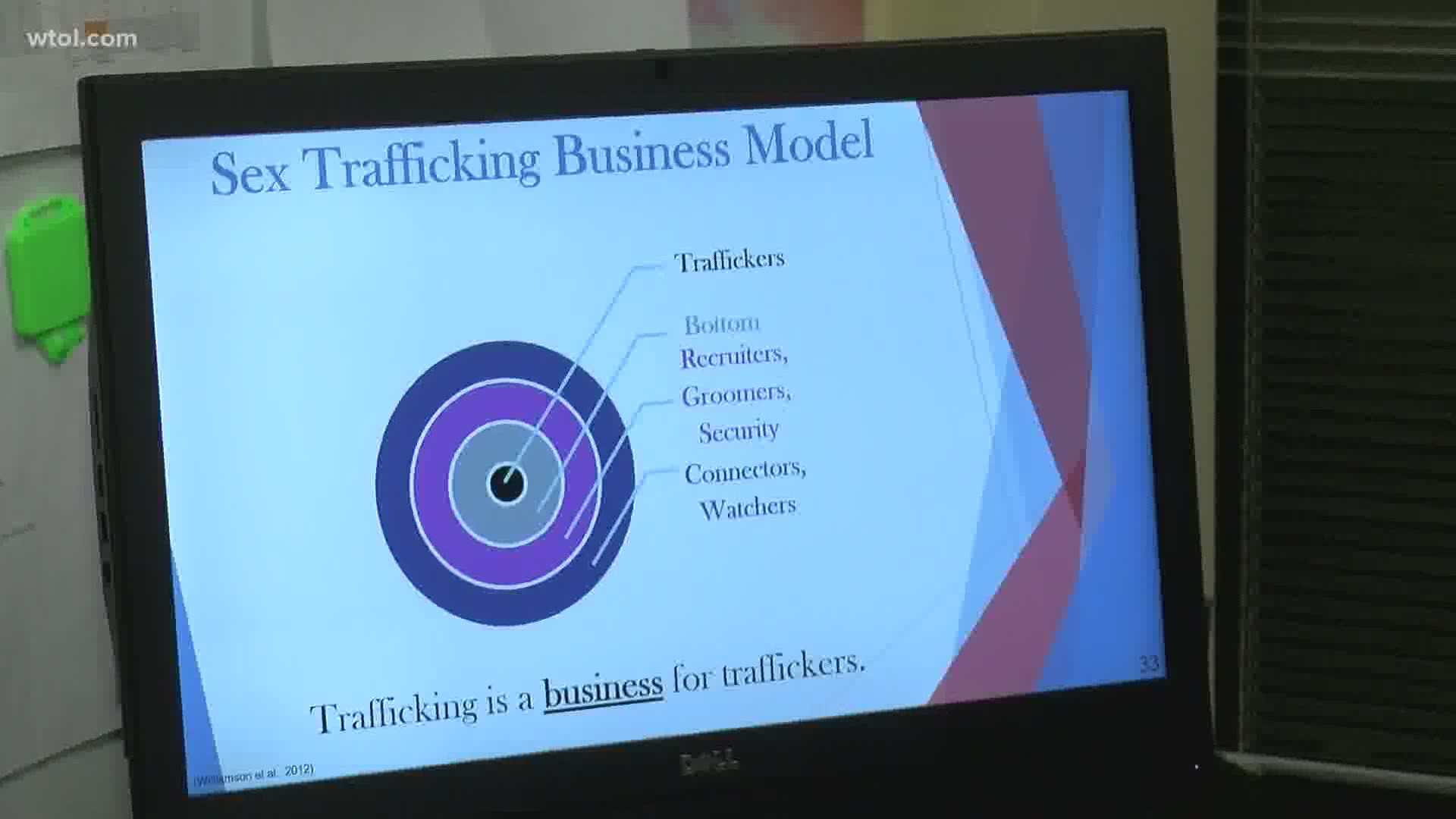TOLEDO, Ohio — A lot of things took a break or stopped altogether during the pandemic.
One thing that did not stop is the threat of human trafficking.
Leading groups in our area, like University of Toledo's Human Trafficking and Social Justice Institute, are still working to keep people safe.
Even during stay at home orders, the problem of human trafficking didn't just disappear. The issue has even drawn more attention online and on social media during the pandemic.
Dr. Celia Williamson, the Executive Director of the Human Trafficking and Social Justice Institute at the University of Toledo, sees a slight connection between COVID-19 and trafficking.
"All of us are experiencing restricted freedom," Dr. Williamson said. "And we're all experiencing the risk of safety. And those two are exactly what human trafficking victims face."
Dr. Williamson said the pandemic has changed how they identify victims and reach them. But, they are meeting that challenge head on.
"We just transitioned to Telehealth, talking to people over the phone, training people using Zoom, increasing awareness," she said. "So, you know, we're still very much addressing the problem."
Dr. Williamson stressed that runaways, especially kids and teens, are most at risk to trafficking. The crime should not be confused with kidnapping or abduction.
Human trafficking is usually not like it is in the movies, where people are abducted in broad daylight.
"It's about manipulating them, befriending them and then unfortunately, it's about deep connection and really, chaining someone's head and chaining someone's heart... Not chaining someone's wrist."
Earlier this year, the Lucas County Sheriff's Office started the FOCUS on Runaways Youth Project to help habitual runaways get connected with the right resources.
"If we're able to intervene at an early age, we're going to hopefully see success as they enter adulthood, and get them onto and get them out of those environments," Sergeant Steve Rogers Rogers said.
Sgt. Rogers added that the pandemic and the switch to virtual learning in schools has made it harder to work with youth.
But, nothing can stop them from doing their part to help.

